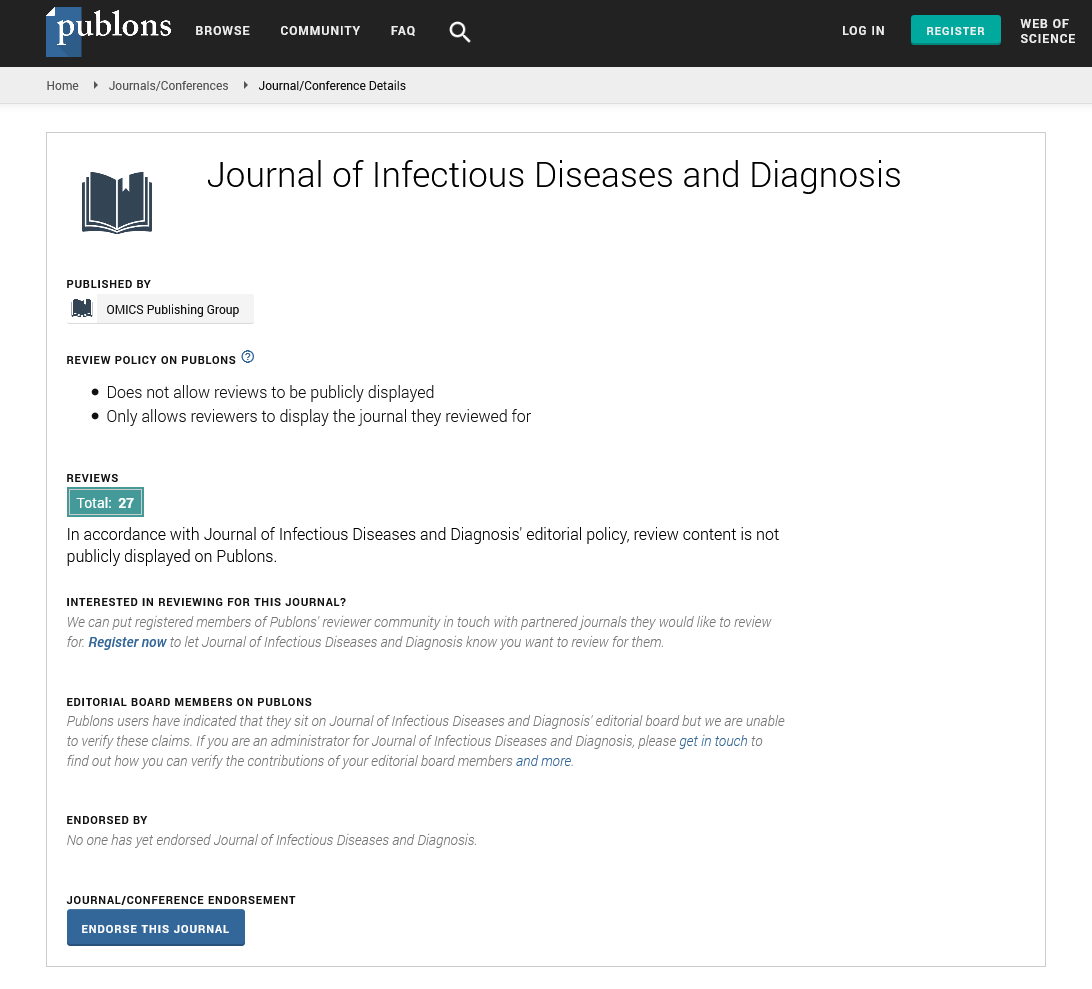Indexed In
- RefSeek
- Hamdard University
- EBSCO A-Z
- Publons
- Euro Pub
- Google Scholar
Useful Links
Share This Page
Journal Flyer

Open Access Journals
- Agri and Aquaculture
- Biochemistry
- Bioinformatics & Systems Biology
- Business & Management
- Chemistry
- Clinical Sciences
- Engineering
- Food & Nutrition
- General Science
- Genetics & Molecular Biology
- Immunology & Microbiology
- Medical Sciences
- Neuroscience & Psychology
- Nursing & Health Care
- Pharmaceutical Sciences
Commentary - (2025) Volume 10, Issue 5
Diagnosis and Detection Strategies for Swine Influenza: Current Methods and Emerging Technologies
Daniel Marston*Received: 29-Aug-2025, Manuscript No. JIDD-25-30289; Editor assigned: 01-Sep-2025, Pre QC No. JIDD-25-30289 (PQ); Reviewed: 15-Sep-2025, QC No. JIDD-25-30289; Revised: 22-Sep-2025, Manuscript No. JIDD-25-30289 (R); Published: 30-Sep-2025, DOI: 10.35248/2576-389X.25.10.348
Desciption
Swine influenza, commonly referred to as swine flu, is a viral infection that primarily affects pigs but has the potential to transmit to humans under certain conditions. Early identification is essential to prevent the spread of the infection and reduce the impact on public health. The disease typically presents with symptoms resembling seasonal influenza, including fever, cough, sore throat, body aches and fatigue. However, human cases can sometimes display more severe manifestations, including respiratory distress and complications such as pneumonia. Proper identification of the virus is critical not only for clinical treatment but also for epidemiological tracking.
Detection of swine influenza begins with a careful evaluation of clinical symptoms, although these signs are not exclusive to the virus. Clinicians often rely on patient history, including exposure to pigs or travel to areas with recent outbreaks, to guide testing decisions. Laboratory testing remains the primary approach for confirming infection. Various methods have been developed, each with specific advantages and limitations. One common approach is the use of rapid antigen tests, which can deliver results within hours. These tests detect viral proteins present in respiratory secretions, but their sensitivity is limited, especially when viral loads are low. Consequently, negative results do not completely rule out infection and additional testing may be necessary.
Molecular techniques, such as Reverse Transcription Polymerase Chain Reaction (RT-PCR), have become widely utilized for detecting swine influenza virus genetic material. RT-PCR allows for highly specific identification of the virus and can distinguish among different strains. This capability is particularly important during outbreaks to determine whether infections are caused by known variants or new forms of the virus. Sample collection typically involves nasopharyngeal or oropharyngeal swabs and strict handling protocols are observed to prevent contamination and ensure the reliability of results. Despite the accuracy of RTPCR, logistical challenges such as the need for specialized equipment and trained personnel can limit its availability in resource-constrained settings.
Serological testing offers another method for diagnosing swine influenza by detecting antibodies produced in response to infection. While this approach is not suitable for early detection, it is valuable for monitoring population exposure and understanding the extent of outbreaks. By measuring antibody levels over time, health authorities can assess immunity within communities and guide vaccination strategies. Additionally, viral culture techniques, although slower and labour-intensive, provide opportunities for studying virus characteristics and testing antiviral susceptibility. These cultures require biosafety precautions due to the infectious nature of the virus, making them primarily suitable for specialized laboratories.
Recent years have seen the exploration of biosensor technologies and point-of-care diagnostics for swine influenza. These tools aim to provide rapid, reliable results without the need for complex laboratory infrastructure. Approaches such as microfluidic devices and immunoassays are under evaluation for their ability to identify the virus with minimal sample processing. If widely implemented, such innovations could reduce delays in diagnosis and improve the management of cases in both clinical and agricultural settings.
Epidemiological surveillance plays a vital role alongside laboratory testing. Continuous monitoring of swine populations and human cases allows authorities to detect unusual patterns of illness and respond promptly. Collaboration between veterinary and public health professionals is essential, as swine influenza represents a disease that can cross species boundaries. Timely identification and reporting of cases enable the implementation of control measures such as quarantine, isolation and vaccination campaigns where appropriate.
Despite advancements in diagnostic methods, challenges remain in achieving rapid and universally accessible testing. Resource limitations, particularly in rural or underdeveloped regions, can delay diagnosis and hinder outbreak containment. Furthermore, mutations in the virus may affect the sensitivity of molecular assays, necessitating ongoing updates to testing protocols. Public awareness and education about early symptoms and reporting procedures are also critical components of effective disease management. Individuals with suspected infection should seek medical evaluation promptly to reduce the risk of transmission and receive appropriate care.
In conclusion, accurate identification of swine influenza is essential for controlling its impact on human and animal populations. A combination of clinical assessment, molecular and serological testing and epidemiological monitoring is necessary for effective management. Emerging diagnostic technologies promise to make testing faster and more widely accessible, but challenges related to resources and viral variability must be addressed. Continued investment in diagnostic research, public health coordination and awareness campaigns will support the timely recognition of cases and reduce the overall burden of this viral infection on society.
Citation: Marston D (2025). Diagnosis and Detection Strategies for Swine Influenza: Current Methods and Emerging Technologies. J Infect Dis Diagn. 10:348.
Copyright: © 2025 Marston D. This is an open-accessarticle distributed under the terms of the Creative Commons Attribution License, which permits unrestricted use, distribution and reproduction in any medium, provided the original author and source are credited.

